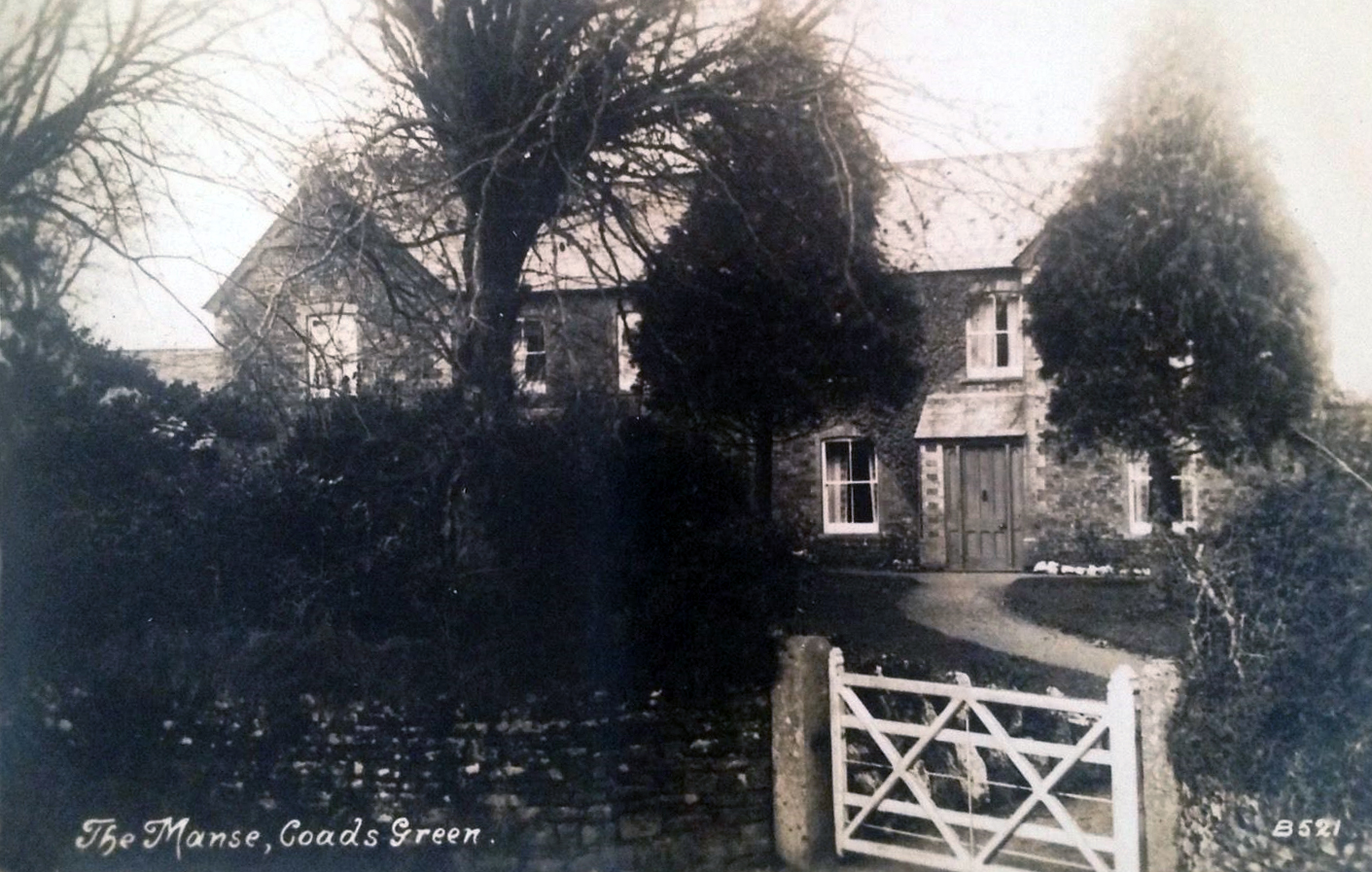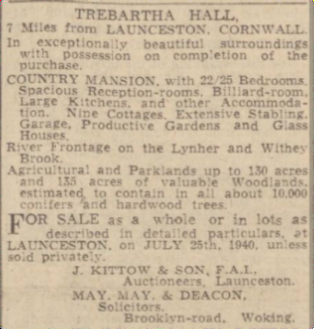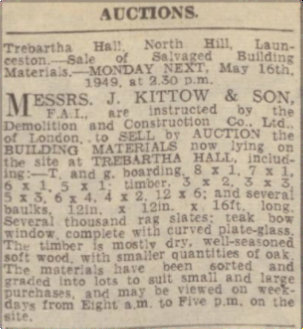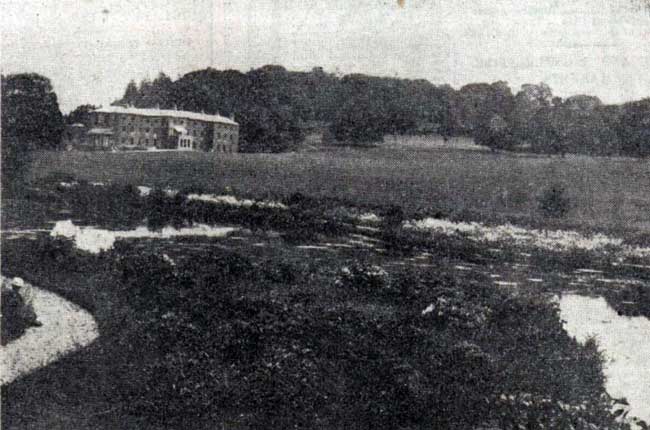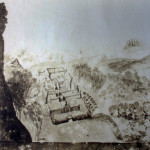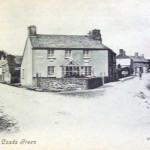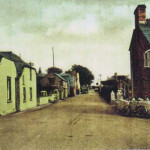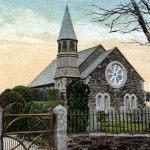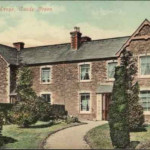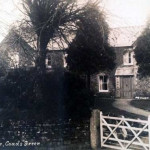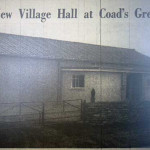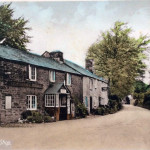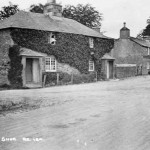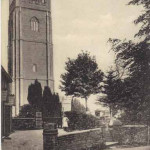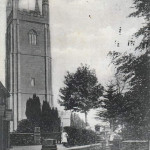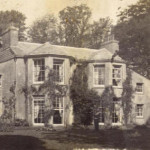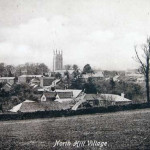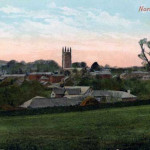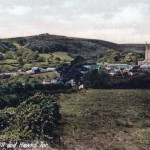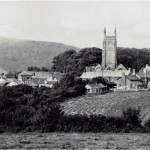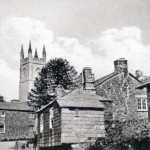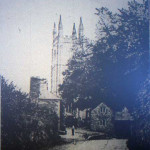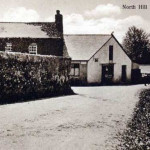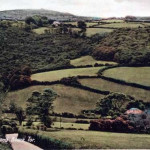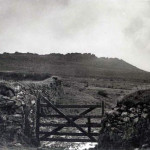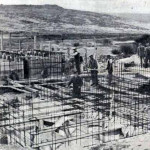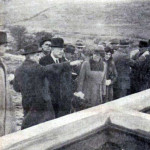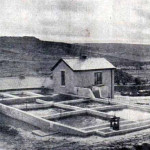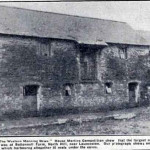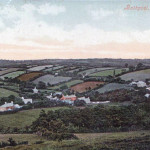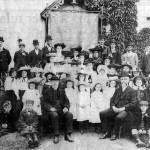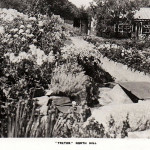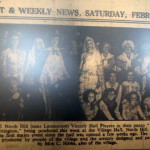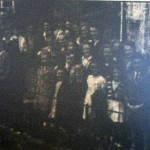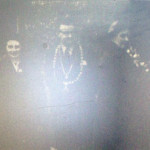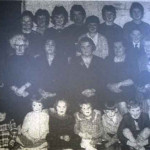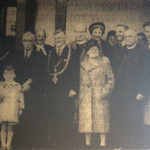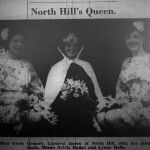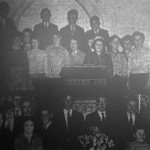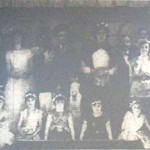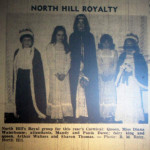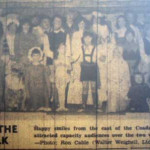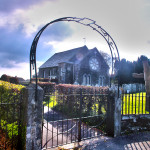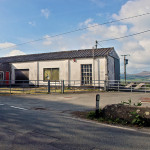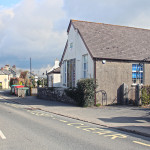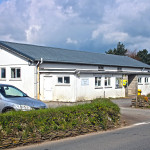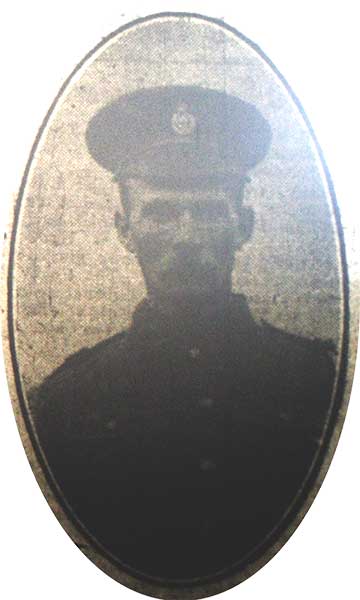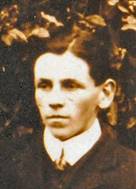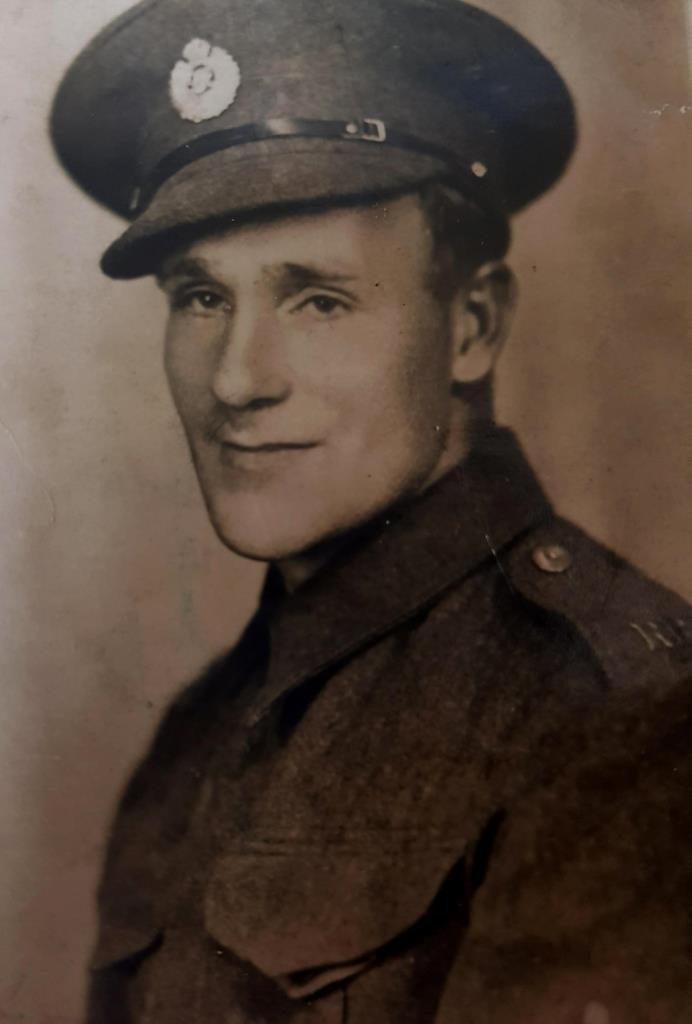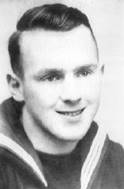.
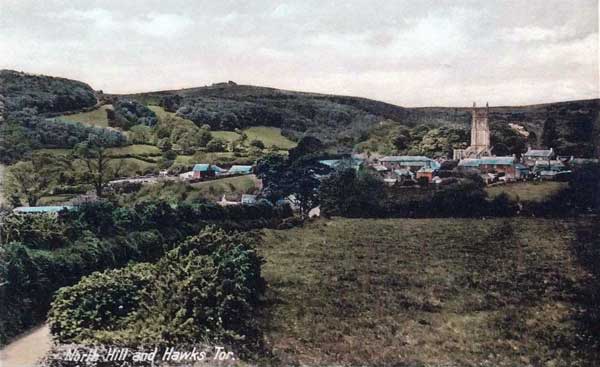
North Hill is a large rural parish on the eastern flank of Bodmin Moor bisected northwest to southeast by the River Lynher. It is bounded in the north by Lewannick parish, on the east by Lezant and Linkinhorne parishes, on the south by St Cleer and on the west by Altarnun. Settlements include the church town of North Hill and Coad’s Green, Bathpool, Congdon’s Shop, Middlewood, Illand, and Trebartha. The parish church is dedicated to St. Torney. The Trebartha estate is one of four farms mentioned in Domesday Book. There were Wesleyan chapels at North Hill, Bathpool as well as the present-day one at Coads Green. The Bible Christians had chapels at Congdon Shop and Middlewood. There were formerly chapels at Landreyne and Trebartha. The manor of Landreyne, according to Mr Spoure’s MS. of 1694, belonged to William Lord Wallis, attainted temp. Edward III. whose daughter Christian married John Trebartha. Mr Lysons, however, could find no account in history of such a person as this Lord Wallis.
The parish is divided into east and west portions by the river Lynher. The eastern part is situated on slate; the western rests wholly on granite and displays some of the most rugged, grand, and romantic scenery of the County. It is in this parish the celebrated group of rocks called Kilmar are situated. Their position is almost as remarkable as the Cheesewring, and stands at even a higher altitude, being 1277 feet above sea level.
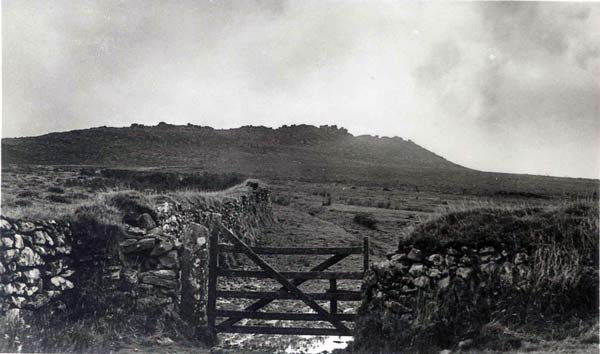
To the north of Kilmar Rocks- are also two other piles of rocks, which are strikingly grand — Trewortha Tor, which includes King Arthur’s Bed, and Hawk’s Tor. Ridge Hill and the Cascade are both situated in the parish.
The Church is dedicated to St. Torney and is an ancient building of granite in the Perpendicular style. It has a south porch, with a fine roof of granite and parvise, and an embattled western tower with crocketed pinnacles, containing six bells; also a chancel, nave, north and south aisles. The chancel was restored by the late Rector, Rev. Charles Rodd. Under the east window is an alabaster Reredos; at each angle are ogee-canopied niches; and there is an ancient piscina in the east wall and part of a hagioscope.
The tower is built upon the hard elvan rock, which may be seen protruding through the floor near the south door. The exterior of the Church was restored in 1892 at a great cost, and in 1897 internally (seen below in 1900) at a cost of £1,100. It will seat 350 persons. The register of baptisms dates from the year 1621; marriages from 1555; and burials from 1630.
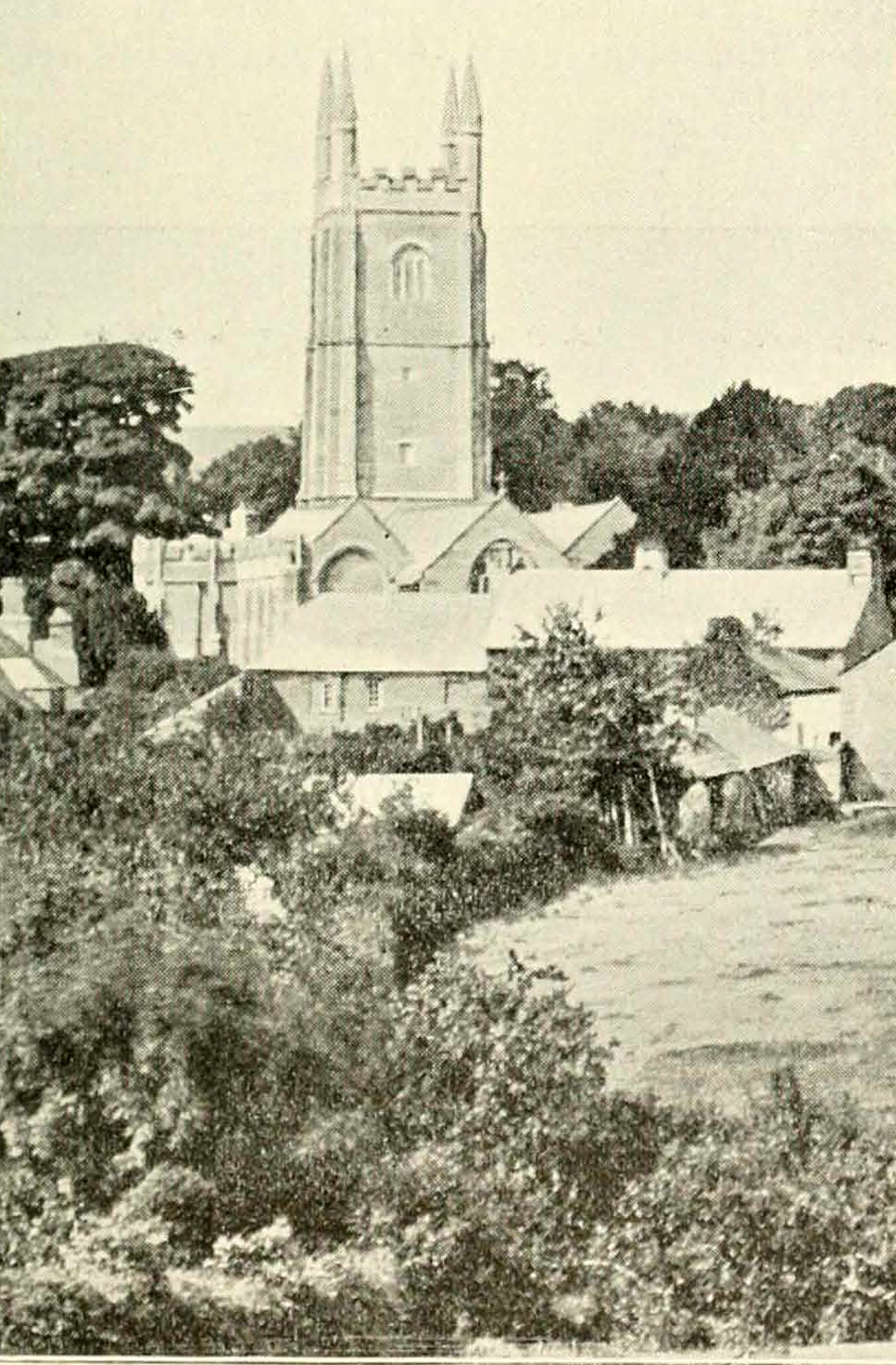

Monuments
In the north wall, there is a tomb or Easter MONUMENTS, sepulchre; and at one end of the Church there is an ornamented altar tomb of slate, on which is the following inscription : —
” Here is ye body of Thomas Vincent Gentleman, and Jane his wife, by whome he had 8 sonnes and 7 daughters, he departed this life 29th of March 1600, she ye 7th Jany. 1601.”
The effigies of both parents and their fifteen children are displayed in the attitude of devotion. There are also figures of death and of our Lord with Latin inscriptions. This monument formerly stood in the east wall of the church on the site of the present organ.
There are also monuments inscribed as follows : —
” Here lyeth the bodye of Henri Spoure, of Trebath, Esquier, who departed this life the VII daye of October, Anino domi 1603, who had issue V sonnes and VI daughters, his adge 61.
As thou art, so was I,
And as I am, so shalt thou be.”
” Here lieth ye body of Richard Spoure; ye son and heire of Henry Spoure,
Esq., and Elizabeth; who was buried ye 20th day of April in Anno Domini 1623.
This carved tombe the sad inscription beares,
Of my soone death, and of my parents teares
For my departure, Though that happy I
By that was freed from future misery ;
And now instead of their fond dandling kisses,
I now enjoy a heaven, — a heaven of blisses,
Waile not therefore for me, but heavens implore,
That God with other issue you would store ;
Whose pious lives may cause you joyful! eyes ;
And Tend your death with sacred obsequies.”
In the chancel there is a memorial window :
” To the glory of God and in memory of Francis Rodd, who died March
2nd, 1880, aged 73. Also of Mary his wife, who died May 17th. 1866,
aged 56.”
Another large memorial window is in memory of Emma, daughter of the late Rev. Charles Rodd; and there is also one in memory of Charles Edward Rodd, who died 13th December 1865, aged 16 years. The Rev. Charles Rodd, late Rector of this parish, was buried in the family vault, and a modest marble monument has been erected in the chancel to his memory.
In 1899, a stained glass window was erected in the south aisle by Sir Rennell Rodd and his mother, in memory of the late Major Rodd.
It is evident from the only relic which is still preserved that there was once a Chapel licensed at Trebartha. It is a Mural Tablet of a child in a Chrysom garment, with a Latin inscription now quite illegible. This monument was originally found in a heap of rubbish near the Chapel at Trebartha, by Edmund Spoure circa 1694. It was subsequently re-discovered face downwards in the floor of an out-house at Trebartha and is now fixed in the east wall of the Church in the Trebartha aisle. With a diminishing congregation, St. Torney Church was closed for worship in 2018.
List of North Hill Vicars from 1532-1901
1532 April 10th. Thomas Chard
1664 December 21st. Jonathon Darley
1700 June 29th. John Darley
1709 May 30th. George Porthbury
1714 October 7th. Peter Church
1717 July 22nd. John Roberts
1748 October 28th. James Trevillian
1767 June 3rd. Thomas Rowe
1772 June 27th. John Veryard Bratton
1821 May 31st. George Thomas Plummer
1828 November 27th. Edmund Trelawney
1832 April 30th. Charles Rodd
1885 March 25th. Theophilus Willing
North Hill Marriage Registers 1555-1748
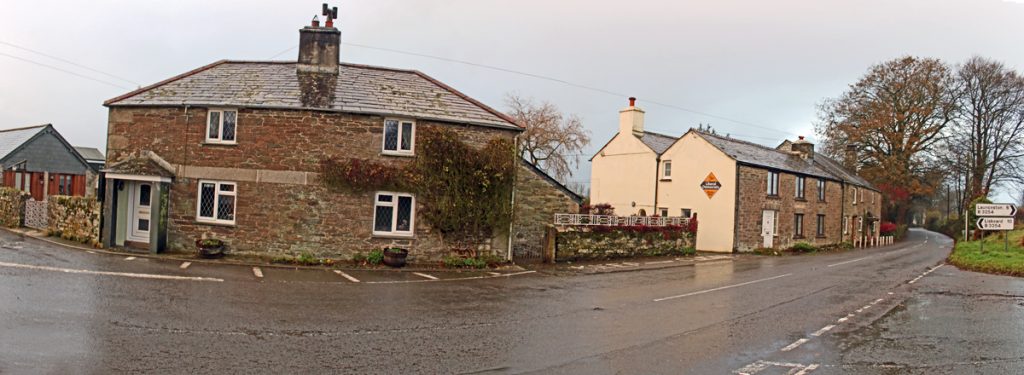
Methodism from a piece published by Thomas Venning in 1901
The first preaching places in the parish were at the houses of a Mr Richard Peter at Illand, and Mr John Nile at Batten’s Farm, in the village of North Hill. This John Nile previously referred to — who opened his house at the request of Adam Clarke for preaching services at Botternell, in Linkinhorne – removed from there to Batten’s Farm in 1786, where he also opened his house to the Methodist Preachers. Here services were conducted every Sunday afternoon, and in course of time a Society was formed, the Class Leader being Mr Thomas Jasper, of Tremollett. Adam Clarke preached at Batten’s Farm once, at least, and his visit is connected with an amusing episode. Molly Nile, the farmer’s wife, was a good old Christian and took great care of the preachers when they came to Battens, always providing something special for the preacher’s supper. On the occasion of Adam Clarke’s visit, Molly anticipated supper-time by cutting off some dainty slices of meat from the joint at the dinner table, which she put away very carefully in the pantry. Forgetting, however, to close the door behind her, the cat walked in and seeing those delicious morsels devoured them, and the preacher had to go without his supper.
For several years there was preaching at Battens (below), varied by services at other places in the village, while prayer meetings were held at Trekernel, the residence of Mr Wm. Wevill.
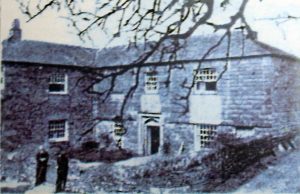
It was in 1809 when the Launceston Circuit was divided and the Liskeard Circuit formed, that all the places from Caradon southward thenceforth belonged to Liskeard; and the Launceston Circuit reached from Botternell on the south to Kilkhampton on the north. The Revs. John Walmsley, Superintendent, and W. Beal, Junior Minister, were both stationed at Launceston when the Circuit was divided. The latter to the end of his long and useful life was never weary of talking about his first Circuit at Launceston, which embraced North Hill. Then there were flourishing Societies in this section of the Launceston Circuit, and it was suggested that suitable Chapels should be erected. The subject was discussed, approved of heartily, and in the year 1810, the building of Chapels began.
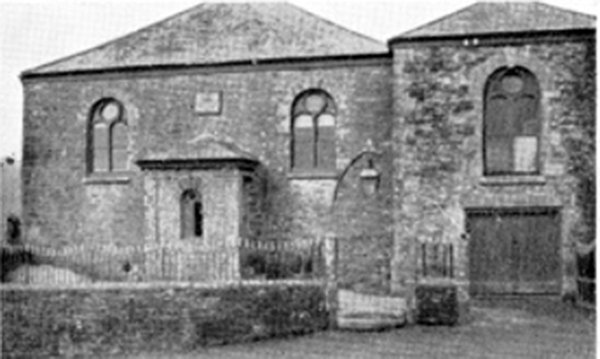
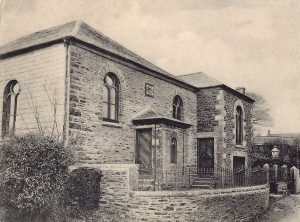
At North Hill, the first Methodist Chapel (above) was erected (now converted to a private dwelling). It was the oldest place of worship in the Circuit. A Mr Thomas Jasper, who was the Class Leader of the Society at Battens, took a prominent position in this undertaking and advanced the money for the purpose of the building. A piece of land was secured and legally conveyed to a body of Trustees, all of whom were hearty supporters of the Wesleyan Society. The names of those forming the Trust of the first Methodist Chapel in the North Hill Circuit were Thomas Jasper, Tremollett; Matthew Wevill, North Hill; Edward Jasper, Tremolltt ; Edward Brown, Northhill; William Pearse, Tremollett ; Walter Dawe, Kingbear ; Samuel Peter, Illand ; Thomas Vosper, Richard Vosper, and George Vosper, of Upton, Lewannick ; and Reginald Jenkin, of Penhole.
The Chapel was opened by the Rev. John Riles, Chairman of the Plymouth Dock District, and great numbers came from, far and near. They trudged along the road; many came on horseback with their fair spouses on a pillion behind them; they thronged the Chapel to the doors, and many stood without unable to gain admittance; and the service was a memorable one.
In 1786 Adam Clarke preached on Shrove Tuesday at Illand, in the house of Mr Richard Peter. For many years services were conducted here until Mr Peter’s death. The Methodists then held their services for a short time at Tremollett, after which they came to Coad’s Green, and occupied an empty cottage in the road leading to Penhole. Here they met in Class, held Prayer Meetings, and established a Sunday School.
Four years before North Hill Chapel was built, a family resided at Trebartha Barton, which was destined to play an important part in Methodism in this parish and circuit. At that time a little boy was born at Trebartha Barton, and they called him Thomas. His father was removed by a painful and sudden death from his family. Some years after Thomas was taken to Lanoy farm at Coad’s Green, where he lived with his elder brother William. When about 11 years of age a revival took place and many in this locality were brought to God, among them being Thomas Pethick and Richard Hicks, then boys together on Lanoy farm. Their zeal for God led them to hold Prayer Meetings in the barn. This was not approved of by Mr William Pethick, and he forbade any religious service to be held on the premises. In fact, his opposition to Methodism was most decided at that time. One morning as William Pethick passed the bedroom of his younger brother, he heard him praying for his conversion; his wife first heard the prayer and then called her husband. He was affected by the earnestness of the prayer. He felt there must be something in this new sort of religion after all, if it caused his brother thus to pray for him. He thought it over. About this time he had a dream which produced a great effect upon him, and William Pethick and his wife converted.
It was now decided to build a Chapel at Coad’s Green, and in 1826 a piece of land belonging to William Pethick was conveyed to Trustees, and the foundation of the present old Chapel — now used for a Sunday and Day School — was laid. Thomas Pethick, used to relate, with a smiling countenance, how he held one end of the tape by which the size of the building was determined, and watched the workmen put in almost every stone until it was finished. Thomas Pethick heartily and energetically laboured in connection with the cause, and some time afterwards the old Chapel had to be enlarged to meet the growing demands of the congregation. Thus Methodism prospered at Coad’s Green, and in all the prosperity no one rejoiced more than Thomas Pethick. Although for many years previous to his death Mr Pethick had not resided in the neighbourhood, yet he had always taken the heartiest interest in North Hill Methodism. Thomas Pethick, who went to reside at Bristol and succeeded in business as a merchant, was up to the time of his death, which occurred February 23rd, 1884, a great supporter of Methodism not only at Coad’s Green but throughout the Circuit.
In the Chapel at Coads Green there is a beautiful Marble Tablet in the shape of a scroll on which is inscribed :
” In Revered and Loving Memory of Thomas Pethick (late of Lanoy) Born at North Hill February 3rd, 1806. He received the Kingdom, of God as a little child and walked in its Light and Freedom For a Period of Sixty Eight Years. As Local Preacher, Class Leader and Steward, He served his Generation Faithfully, and Fell Asleep In Jesus February 23rd. 1884.
Also of Susan his wife who entered into Rest September 9th, 1886.
‘ Lo He bringeth them unto the Haven where they would be.’ — Ps. 107.30.”
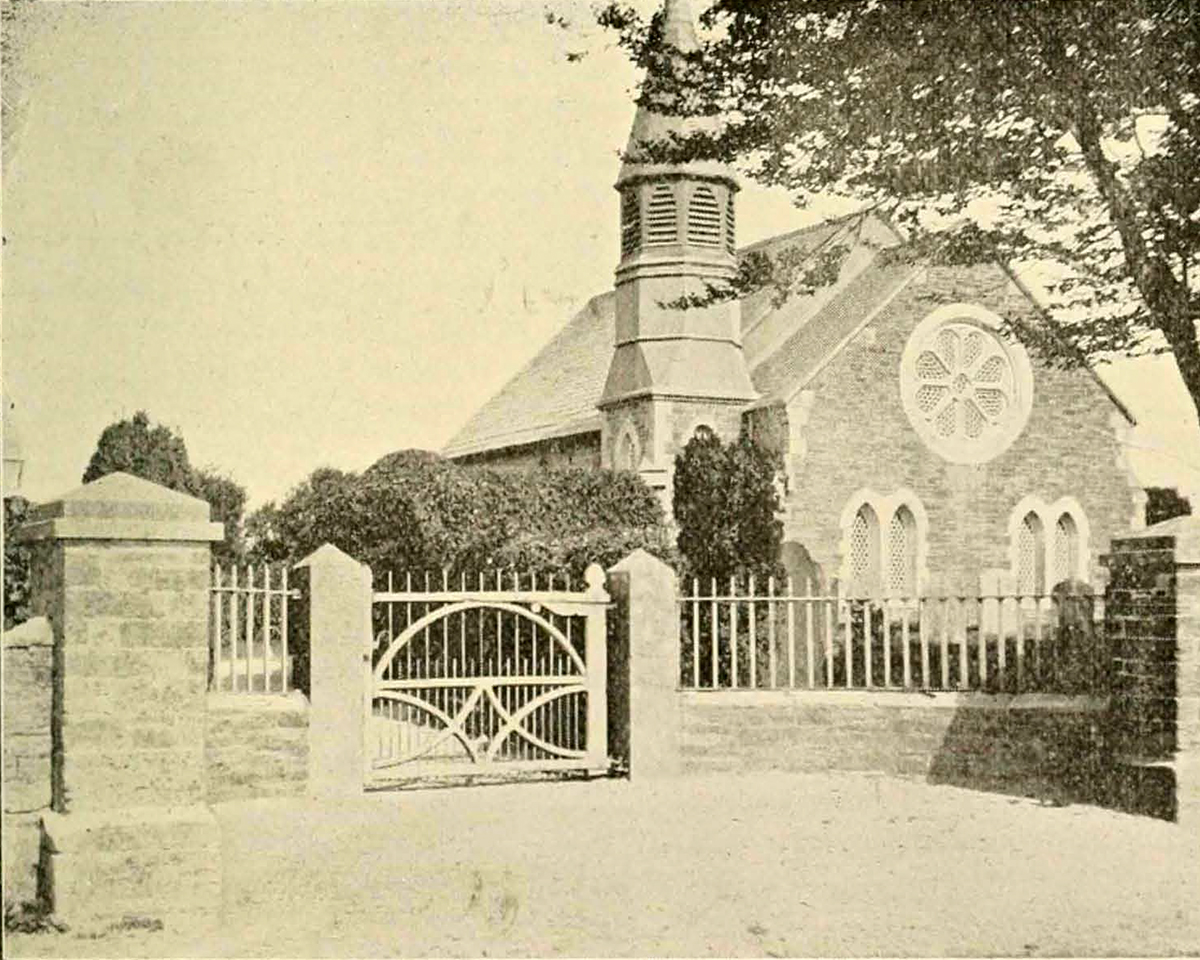
The present neat and pretty little country Chapel at Coads Green (seen above in 1900) was erected in the year 1848. There are convenient vestries adjoining the Chapel at the rear. A School-room is also near, which was formerly used as the old chapel.
In 1868, when the North Hill Circuit was divided from Launceston, Coads Green was made the head of the Circuit, being the most central. In addition to the complete set of premises which the Wesleyans previously possessed, a Minister’s house called “The Manse” (above) was erected very near the Chapel, the site of which was granted by the late Mr. Thomas Pethick, who also contributed largely towards the erection, the cost of which, about £400, was soon entirely defrayed by the Circuit. There were eleven places of worship in the Circuit, nearly all of which had possessed complete premises with conveniences attached, including Cemeteries. The North Hill Circuit was often called ” The Model Country Circuit of Methodism.”
Trebartha
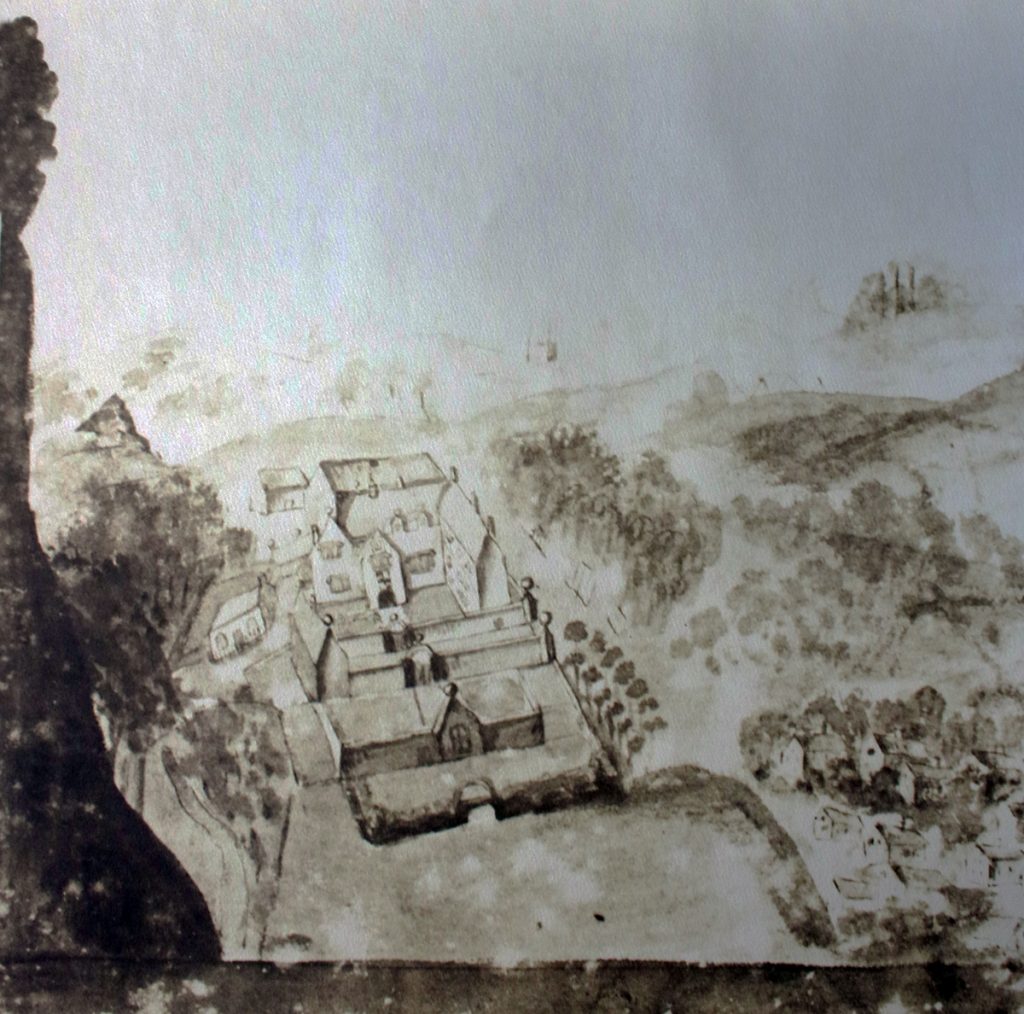
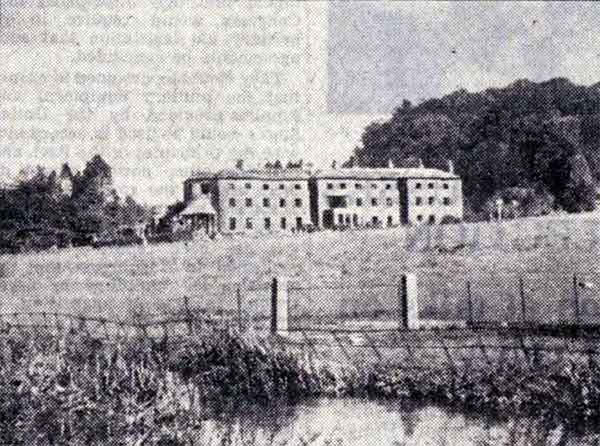
Trebartha Hall (above) has a long history with the original house being built in the 12th century. In the time of Edward III, the property was held by a family who assumed the name of Trebartha. Nicholas Trebartha, the last male heir, died in the reign of Henry VII, leaving a daughter who married Thomas Spoure. Thereafter Trebartha was the seat of the Spoure’s and the Rodd’s in turn for over 200 years each.
One of the descendants, Henry Spoure, discovered a rich tin lode on the estate. The yield was so generous that he gave £1,000 to each of his five daughters. According to Edmund Spoure, the family chronicler of 1694, this was the first £1,000 ever given to a daughter ‘for a portion by any private gent of his quality in Cornwall.’ Gold in small quantities was also obtained, and some of it was fashioned into a seal ring which became a family heirloom. ‘Full five descents this old ring has been possessed,’ wrote the chronicler, ‘since first extracted from the tin by the Spoure’s, so by succession now has come to me, of the first line now the last son. Then let’s begin and dig, ne’er doubt of small things, leave the success to Him who governs all things.’
The reign of the Spoure’s ended in 1727. In that year, the heiress, Mrs Mary Grylls, a widow, died before her intended marriage to her cousin, Francis Rodd, and to him she bequeathed Trebartha. The property remained with the Rodd’s until 1940. Curiously enough, a portion of the estate was levied in the payment of a feudal due to the Duke of Cornwall whenever he crossed the Tamar into the Duchy. It was a pound of cummin. The last payment of this aromatic seed was made at Launceston Castle in 1973 to Prince Charles.
In the 18th century the mansion of the Trebartha’s, Spoure’s and Rodd’s, including a domestic chapel, was demolished by Colonel Francis Rodd and he built Trebartha Hall on the same site.
In 1940 the ancestral home was sold by Major Edward Rodd to Trebartha Estates Ltd who were based in London. The hall was then commandeered for use in turn as an RAMC hospital for British then US soldiers and finally for POW’s. The heavy expenditure necessary to restore the property, and the impracticability of converting the hall to flats, were among the economic reasons which led to the company’s decision to demolish the premises with the materials being placed for auction.
Some of the buildings to the north of the main hall still survive today and are in domestic use. The estate and the wonderful gardens still survive and are now in the hands of the Latham family. For more on Francis Rashleigh Rodd.
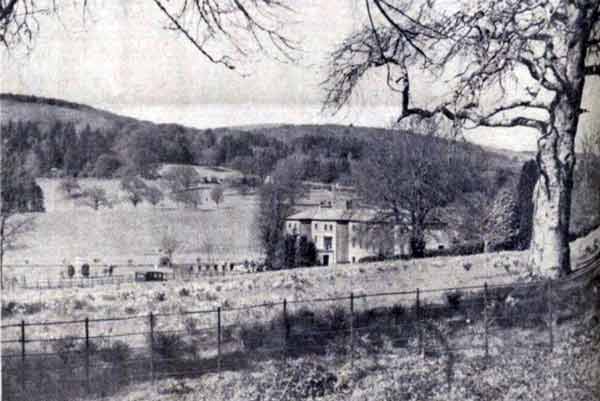
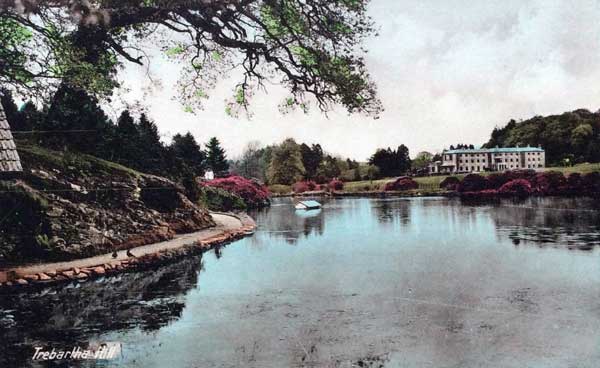
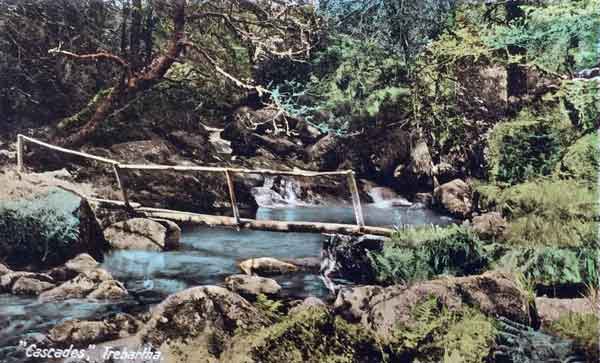
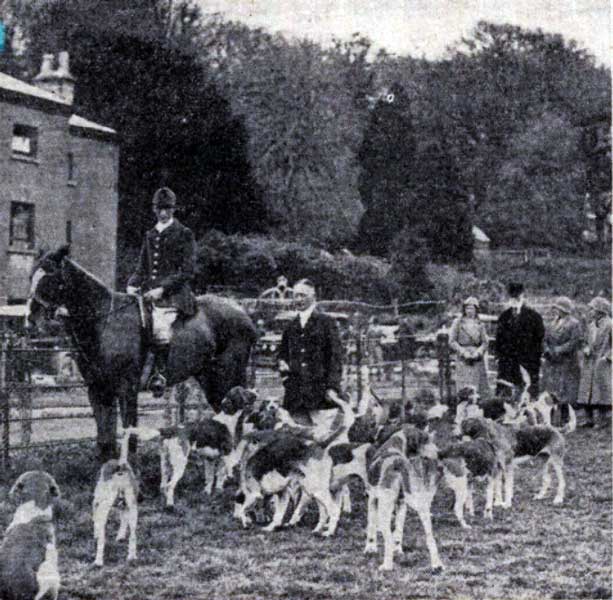
North Hill Gallery.
North Hill’s Fallen from World War One. (with special thanks to Ken Ripper and the North Hill History Group).
North Hill Parish Roll of Honour. For further information visit the North Hill History Group website.
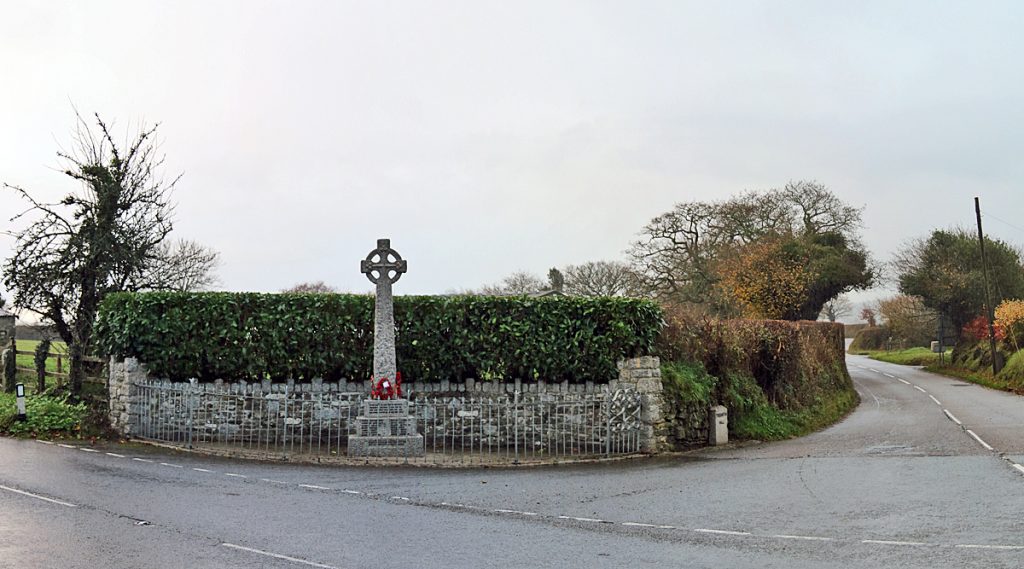
Leonard Richard Bartlett (1889-1917)

Leonard was born in 1889 to John Coumbe Bartlett. When Leonard was 20 he emigrated to Canada with his friend Henry Foott, also of North Hill, sailing aboard SS Empress of Britain on May 7th, 1909. At the outbreak of the war, Leonard was serving with the 100th Winnipeg Grenadiers (Militia). He enlisted with the 78th Battalion of the 3rd CEF on August 3rd 1915. On March 4th, 1916 he was transferred to the artillery where he became a driver (Regimental No. 312030). He arrived with his Battalion in France on August 12th, 1916, becoming part of the 4th Canadian Division, 12th Canadian Infantry Brigade. Having taken part in many battles on the Somme, the 3rd CEF moved to the Arras area. This area was renowned for its damp and foggy conditions, and it is here that Leonard was likely to have contracted pneumonia. He was sent to a hospital where he made sufficient recovery to return to his home at Berrio, North Hill. However, he caught a chill, and this along with bronchitis and asthma, caused the return of the pneumonia from which he died on February 23rd, 1917, aged 27. He was interred at St. Torney Church. He is commemorated on the North Hill War Memorial at Congdons Shop.
William Frederick BETTES
William was born in 1889 to Cecilia Bettess at Trewen. In 1911 he is living with his mother and stepfather Joseph Congdon at Polyphant and working as a Stonemason. On the 22nd of April 1912, he married Emma J Maunder at Lewannick and they set up home at Bovey Tracey, Devon. Working then as a Gardener. He enlisted at Newton Abbot with the Devonshire Regiment (Regimental No. 315012) as a Lance Corporal but was later transferred to the Wiltshire Regiment (Duke of Edinburgh’s) (Regimental No. 203106). He was killed in action on the 27th of October 1917. He is buried at the Torreken Farm Cemetery, Belgium. His wife had moved to Bathpool by the time of his death. He is commemorated on the Lewannick memorial and the North Hill War Memorial at Congdons Shop.
Edred BUCKINGHAM
Edred was born on August 1st, 1876 to Jabez Buckingham. His father was a wheelwright in the village. On leaving school Edred went to work as an apprentice millwright. However, aged 22, he joined the Royal Navy in March 1898 (Service No. 269315). On enlistment, he was shown as being a fitter, and he joined ‘HMS Vivid.’ Training as an acting engine room artificer (ERA) began and then on February 23rd, 1899 he joined the compliment of ‘HMS Rupert.’ Later that year Edred transferred to ‘HMS Theseus’ and it was aboard this ship that he was promoted to a full ERA. In 1900 he joined the crew of ‘HMS Royal Sovereign’ before returning to the Theseus. In 1902 he married Bessie Christina Harvey from Broadwoodwidger, and in 1905 their only child, Lilian, was born in Plymouth. By this time he had spent three years at ‘HMS Defiance’ the Navy’s torpedo school. On leaving here in January 1905, he joined ‘HMS Hood’. From here in addition to more spells at Vivid, he joined ‘HMS New Zealand’ until 1907. Spells then followed aboard ‘HMS Leander’ and ‘HMS Blake.’ It was whilst serving on Blake that he was promoted to acting engine room artificer second class. ‘HMS Indefatigable’ was his next ship serving in the Mediterranean. By the time he left Indefatigable, he had achieved the rank of Chief ERA second class. His final posting was to ‘HMS Nottingham’ a brand new ‘Town’ class light cruiser. The Nottingham saw action at Heligoland Blight, August 1914, Dogger Bank, January 1915 and Jutland, May 1916 and it is likely that Edred was present during these engagements. On Saturday, August 9th, 1916 the Nottingham was torpedoed in the North Sea by the German submarine U52. Of the ship’s company of 500 only 38 lost their lives. Edred was among those that died. His body was never recovered but his name is commemorated on the North Hill War Memorial, Roll of Honour in St Torney’s Church, North Hill, Coad’s Green Sunday and Day School Roll of Honour and the Plymouth Royal Navy memorial.
Albert COLWILL
Albert was born in 1889 at Lifton to William and Thirza Colwill. His father was a farm labourer. In the late 1900’s the family moved to Batten’s Farm at North Hill. Here Albert was listed in the 1911 census as a waggoner on the farm. Albert enlisted with the Royal Navy (Service No. K/18812) as a Stoke Second Class on April 7th, 1913. He signed on for twelve years. Albert began his career at the shore base ‘HMS Vivid before joining ‘HMS Ajax’ from October 1913 to the end of January 1917. Here he would have taken part in the ‘Battle of Jutland.’ After a period as an acting leading stoker, Albert achieved substantive promotion to the rank in February 1917 and on joining ‘HMS Anchusa’ in May 1917 he had become a leading stoker. The Anchusa was a ‘Flower’ class Fleet Sweeping Sloops. These ships were built to a design that looked like a merchant ship, so that as well as mine-sweeping, they could also serve a ‘Q’ or decoy ships, offering an armed response to surface U-boat attacks. On July 14th, 1918, Anchusa sailed with a crew of 91 officers, men and boys from Lough Swilly, a Royal Navy staging port for the North Atlantic convoys on the Donegal coast. The following morning she screened a homeward-bound convoy off the Northern Ireland coast and was then ordered to return to Lough Swilly. Whilst on her way back to port she was diverted to help search for a submarine which had been reported in the area. Nothing was discovered and she resumed her passage to Lough Swilly. Early in the morning of July 16th, she was torpedoed by U54. The Anchusa broke up and sank rapidly losing all but twelve of the crew including Albert. His body was never recovered but his name is commemorated on the Plymouth Naval Memorial, North Hill Parish War Memorial and the
Roll of Honour in St Torney’s Church, North Hill.
Mark DUANCE
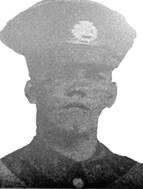
Mark was born in 1897 at North Hill. On leaving school he went to work as a farm labourer on Joseph Moyes’s farm in North Hill. Mark enlisted alongside Sydney Perry on December 14th, 1914 with the Duke of Cornwall’s Light Infantry. He trained at Falmouth before being posted to France. He was reported as being wounded on July 10th, 1915 and was treated at Cork Hospital before being moved to the Isle of Wight, where he stayed until November. He was then sent to Salonika where sometime after his arrival he contracted a fever and was sent back to Malta. In 1916 Mark was transferred to the 7th Battalion, Royal Dublin Fusiliers as a Private (Regimental No. 24198). In the very early hours of October 3rd, 1916, the 7th Battalion was 50 miles northeast of Salonika awaiting the impending attack to capture the village of Jenikoj, a short distance to the north. At 5:00 a.m. the British big guns sent a shell after shell into Jenikoj village. In the dim light of early dawn, it was possible to discern the smoke rising from the burning houses. Half an hour later the troops moved up behind the artillery barrage. In less than an hour, the village was taken without any serious casualties. Mark’s battalion took up a position north of the village. They had captured the village more quickly than the artillery had expected, and the relentless barrage from their own heavy guns was now creeping towards them.
Despite this early success, neither side gained the upper hand. The enemy counter-attacked fiercely and the allies fought back to regain the ground. Troops were advancing and falling back all day. In the hail of bullets and shells, Mark was one of many cut down. Some British troops were caught up in the bombardment by Allied artillery and were killed under friendly fire. Exactly how Mark was killed is not known but he was one of 128 from the 7th Battalion who were recorded as dead, missing or wounded. He was interred at Struma Military Cemetery, Greece. His name is commemorated on the North Hill Parish War Memorial, Roll of Honour in St Torney’s Church, North Hill and Coad’s Green Sunday and Day School Roll of Honour.
From the Cornish and Devon Post:
Official news was received on Thursday last week, of the death of Private Mark Duance, of Penhole, Coad’s Green, who was killed in action whilst serving with the Balkan Forces. Deceased enlisted on the 14th December 1914, was sent to Falmouth for training and was in the trenches on May 1st, 1915. He was reported wounded on July 10th and moved first to Cork Hospital and then to the Isle of Wight where he stayed from August to November. He was then sent to Salonica, where sometime after his arrival he contracted a fever and was sent back to Malta. On his recovery, he was sent to the Balkans, where he was killed at the age of 19 years. The greatest sympathy is extended to Mr and Mrs Mark Duance and family in their sad loss. They have two sons serving their country, and two sons-in-law.
At the close of a meeting in the Wesleyan Chapel on Friday evening the superintendent minister (Rev W Ball) referred to the death of Private Duance, a former Sunday school scholar, and whose parents are regular attenders at the chapel. A vote of sympathy was passed with the bereaved ones; also with the parents and family of Private Sydney Perry, DCLI, who enlisted at the same time and was killed in action a short time ago. After Monday morning’s service, the organist (Miss Hicks) played the ‘Dead March’.
Alfred Edward FOOTT
Alfred was born in 1896 to Oliver and Ellen (nee Buckingham) Foott at Middlewood, North Hill. His father was a carpenter. Alfred followed into his father profession in becoming a carpenter. However, with the outbreak of the war, he enlisted as a carpenter with the Royal Navy (Service No. M/16360) at Chatham in Kent on 11th November 1915 just three weeks after his elder brother James. He was nineteen years old, and like his brother, had black hair, grey-blue eyes and the fresh complexion of a countryman. Because of his existing skills as a carpenter, he was an automatic candidate for carpenter’s crew. Less than a month after his enlistment, he joined HMS Blanche in December 1915.
The Blanche was a Blonde-class scout cruiser, assigned to the battleship squadrons of the Grand Fleet. She was at the Battle of Jutland in mid-1916 but was held in reserve, and did not fight. Alfred was probably on board at that time, but by November 1916 he had returned to Chatham. Alfred was assigned to HMS Vanguard on 14th June 1917. The Vanguard was a St Vincent-class battleship, a splendid vessel which had fought at the Battle of Jutland and survived undamaged. When Alfred joined her, she was at anchor in Scapa Flow, the huge British naval base in the Orkney Islands. After Jutland, the majority of the ships of the German Navy had retreated to their own bases, and the Home Fleet had consequently reduced its own presence at sea.
Naval routines continued as usual and there was still much to do. On the afternoon of 9th July 1917, the Vanguard had been out exercising, practising abandoning ship. She returned to anchor at about 6:30 p.m. That same night the Vanguard was destroyed by a huge explosion which killed all but two of those aboard at the time. The total crew numbered 845, of which 802 were lost, one of which was Alfred. In addition to the two survivors of the explosion, a few fortunate officers had been visiting other ships moored at Scapa Flow. In terms of loss of life, the destruction of the Vanguard is the most catastrophic accidental explosion in the history of the UK, and one of the worst accidental losses of the Royal Navy.
Various theories about the cause of the explosion have been offered, including the incorrect storage of cordite or the heating of ammunition, but it is not known exactly what caused the catastrophe. The force of the explosion was such that one of her turrets landed a mile from the anchorage. Alfred’s body was never recovered but his name is commemorated on the Chatham Naval Memorial, Kent, North Hill Parish War Memorial and the Roll of Honour in St Torney’s Church, North Hill.
James Aunger FOOTT
James was born in 1892 to Oliver and Ellen (nee Buckingham) Foott at Middlewood, North Hill. His father was a carpenter. James followed into his father profession in becoming a carpenter. However, with the outbreak of the war, James enlisted as a carpenter with the Royal Navy (Service No.M/15887) on 19th October 1915. He spent a full year at the stone frigate (shore establishment) ‘HMS Vivid’ in Plymouth and then went straight onto ‘Q-ships’. He joined the ‘HMS Vala’ in May 1917. The Vala was originally a collier and, along with many other merchant ships similarly requisitioned, she had been converted into a ‘Q-ship’. She was a disguised, armed ship specifically intended to entice enemy submarines to the surface so that they could be fired upon. During the first eight months of 1917, she had been involved in gunfights and confrontations with several U-boats off Milford Haven, Lizard Head, the Scillies and the Fastnet Rock.
Her last patrol took her back to the Fastnet/Scillies area again. This time, UB54, a class III U-boat out on its first-ever patrol and commanded by Oberleutnant zur See Egon von Werner, was waiting for her. The submarine had spotted lookouts on the British vessel through her periscope and had identified her as a likely ‘Q-ship’. According to the U-boat log, one torpedo was fired. It hit the Vala in the forward hold, after which most of her crew were seen taking to two lifeboats, each with twelve to fourteen men. Eight men could be seen still on the Vala. UB54 fired another torpedo which hit the after hold. A further sixteen to twenty men left their now rapidly sinking ship. It was this U-boat’s first kill. After ten minutes the U-boat surfaced. It found wreckage from the Vala which confirmed her status as an armed vessel. The surviving crew were questioned from the U-boat and confirmed their ship’s name and complement for the submarine’s log. The Vala’s crew were then left to their fate, which was customary with submarine warfare. The winds were already nearing gale force and rising, so there was no real hope for those who had survived the two torpedoes. All 43 men were lost. Amongst the crew was James. The last known position of ‘HMS Vala’ was given as approximately 120 miles south-west of the Scilly Isles on 21st August 1917. His body was never recovered but his name is commemorated on the Plymouth Naval Memorial, North Hill Parish War Memorial and the Roll of Honour in St Torney’s Church, North Hill.
Elsie Margaret Humphrey (full her full story visit the North Hill History Group website)
Elsie was born in 1889 to George (of Mickleham in Surrey) and Caroline (nee Taylor) Humphrey. Her father was a clerk (merchant and later for a railway company). George, died in early 1890, leaving Caroline as a widow with an 11-year-old son (Francis), a 3-year-old son (Arthur) and a baby daughter, Elsie. In 1891 the remaining family were living in Victoria Road in Romford. Their home was a whole house and was situated almost opposite the junction with Albert Road. The family had a 12-year-old live-in servant with them, a local girl named Florence Asplin. It is likely, though, that the family soon fell on hard times and they moved back closer to the metropolis and closer to the poverty which existed there in Victorian times. Caroline remarried to George John Mann in 1897 in the West Ham area. He was a collector of rates and seven years older than Caroline. At the time of the 1901 census, Elsie Humphrey and her brother Arthur Humphrey lived in the family home with their mother and stepfather at 48 Tredegar Road in Poplar. Caroline died in 1902 when Elsie was just 12 years old and Arthur was 14. George John Mann died in late 1910. It is likely that Elsie had left the family home by this time to join the nursing service and Arthur was already independent and learning a trade as an electrician. By 1911 Elsie was a 22-year-old hospital nurse at Addenbrooke’s Hospital in Cambridge. It was here that she met her lifelong friend Mary Alice Brown who will become very important in Elsie’s later story. Addenbrooke’s was a major training hospital for nurses. The conflict which was to be World War One dragged Britain into the fighting on the 4th August 1914. Exactly one week later, on the 11th, Elsie was mobilised into the Territorial Forces Nursing Service and was posted as a staff nurse to the 1st Eastern General Hospital, Cambridge. At the same time as Elsie was mobilised, so was Mary Alice Brown who was also a nurse at Addenbrooke’s. It is likely that they had been friends for some time and their staunch friendship was to persist over many years. The 1st Eastern General Hospital was established by the Royal Army Medical Corps in 1908. It had a close relationship with Addenbrooke’s Hospital as medical and nursing staff served in the 1st Eastern in both world wars. It catered for the medical needs of some of the men wounded whilst serving in the front line. During the First World War, the 1st Eastern General Hospital had its headquarters in Trinity College, with beds in the Leys School and in the grounds of Trinity College, and later in temporary buildings on the cricket grounds of Clare College and King’s College to the south of Burrell’s Walk. It had over 1500 beds by the end of 1915. Various wards of Addenbrooke’s ended up being considered an extension of the 1st Eastern. Officially the 1st Eastern had 151 Officer beds and 1191 Other Ranks beds, although various wards of Addenbrooke’s ended up being considered an extension of the First Eastern, which continued its war duties until 1920. During October 1916 Elsie fell ill and was diagnosed with lymphangitis, a swelling of lymph nodes, in the upper thigh. She was operated on to remove the inflamed gland on 1st November and a medical board held on 5th December decided that she would be unfit for service for a further three weeks and that the condition was brought on by her military service as a nurse. She was due to resume work on Christmas Day but on Boxing Day another medical board was held to assess her condition. This determined that whilst she was not fit for general service for 2 months, i.e. overseas work, she was capable of working in the UK at that time.
In April 1917, when approaching her 29th birthday, Elsie’s work at the hospital was recognised and rewarded with promotion to Sister. Along with many others, Elsie signed an agreement on the 17th August 1917 saying that she was prepared to work outside the UK. There seemed to still be a need for Elsie to work with returning wounded troops and it was not until 13th July 1918 that Elsie was medically examined and found to be fit to work in a military hospital abroad. On 12th September 1918, Elsie arrived at the No.5 General Hospital in Rouen, 75 miles from where the big Hundred Day offensive had already begun. This offensive proved to be the final action of the war, resulting in the German’s surrendering. Although the war was over, there was still much to do in France and Elsie spent Christmas 1918 at her hospital in Rouen, but she was feeling decidedly unwell. On the 28th December, after just 5 months in France, she was diagnosed like so many people at that time, with influenza. On 13th January 1919, it was clear that Elsie was getting no better so she was brought back to England and placed in the care of the Queen Alexandra’s Imperial Military Nursing Service (QAIMNS). However, in the May she was diagnosed as having tuberculosis. By the end of September 1919 a period of nine months had elapsed since Elsie first fell ill. In that time Elsie had also suffered a succession of relapses and misdiagnoses as well as the administrative failures in the War Office which prevented her from getting the treatment she both needed and deserved. By the end of December 1919 her illness was deteriorating she told the authorities that she wished to stay with friends in Cornwall, probably Sister Mary Alice Brown of the TFNS who had rented a cottage in North Hill. A medical board reviewed her case on the 22nd March and found Elsie was very poorly from the TB and emaciated. She told the board that she wished to go to her home in Cornwall. The Medical Officer in charge of the case and the Board agreed that this would be a satisfactory outcome but until that could be arranged, Elsie would remain at Millbank.
Her service record shows she was discharged from the hospital on the 29th of March. This was followed two days later by a letter from the War Office thanking her for her service during the war. The letter from Sidney Browne, Matron in Chief of the TFNS read: “As you are leaving the Territorial Force Nursing Service, I wish to take this opportunity of thanking you for the good service you rendered during the war. Your work was excellent and was fully appreciated by all those under whom you served. Her Majesty Queen Alexandra has graciously given permission for you to retain your TFNS badge as you have completed four years’ service during the war.” Elsie’s new home was at Kingbear in North Hill with Mary Brown caring for her. However, by April 15th Elsie had become so weak that she could no longer handle her correspondence and on April 20th, she passed away. She was interred three days later on St George’s Day in St Torney’s Churchyard. She is commemorated on the North Hill War Memorial at Congdons Shop.
John Henry Hutchings (1882-1918)
John was born in 1883 to Thomas and Amelia Hutchings at South Sydenham, Devon. His father was a General Labourer. The family moved to North Petherwin, and in 1891 were living at Daws Cottage, North Petherwin. In 1909 he married Blanche Jane and they set up home at Tregoiffe, Linkinhorne where he worked as a Farm Labourer. The family was living at Hurdon, Launceston at the time of his death.
He first joined the Royal Veterinary Corps (A.V.C. 19884) but was transferred to the Alexandra, Princess of Wales’s Own (Yorkshire Regiment) as a Private (Regimental No 33969). He was instantly killed when a shell exploded near a trench he was guarding on the 1st of January 1918 and is buried at the Mory Abbey Military Cemetery, Mory, Departement du Pas-de-Calais, Nord-Pas-de-Calais, France, Plot: II. A. 9. He is remembered on the Launceston, North Hill and North Petherwin war memorials.
Ernest Albert Jasper
Ernest was born in 1893 at Ruses Mill, Lezant to John (Barber) and Mary Jasper. He worked as a Waggoner and horseman for his stepbrother Thomas Jasper who was the miller at Ruses Mill. Ernest would have been conscripted in late 1916 and reported for training with his training unit the Hampshire Regiment 13th (Service) Battalion as a Private 8/4864. Ernest fell ill during his training and was admitted to the Red Cross hospital at Littleham, Exmouth. Ernest’s illness of bronchopneumonia which was aggravated by measles and he passed away on the 28th February 1917.
He is buried at the Wesleyan Chapel, Coads Green and is commemorated on Lezant, North Hill and South Petherwin War Memorials
Frank JASPER
Frank was born in 1893 at Lezant to William and Jane (nee Mayne) Jasper. His father was a farmer. After leaving school, Frank worked as a farm labourer. He enlisted at Launceston with the Worcestershire Regiment as a Private (Regimental No. 36436) serving with the 1st battalion. He was killed fighting in battle at Flanders on March 4th, 1917. His body was never recovered but his name is commemorated on the Thiepval Memorial, France, Lewannick War Memorial and
Coad’s Green Sunday and Day School Roll of Honour
John JASPER
John was born in 1888 at Treovis, Linkinhorne to John and Emma Jasper. On leaving school he went to work for Alfred Coad of North Hill as a waggoner. He volunteered for service enlisting May 24th, 1915 as a Private (Regimental No. 1947) with the 2nd/7th Cyclist’s Battalion, Devonshire Regiment. He was discharged due to sickness on March 4th, 1916 and returned home. However, his health deteriorated over the next two years and he died in 1918. He was interred at St Torney, North Hill. His name is commemorated on the Roll of Honour in St Torney’s Church, North Hill and the Linkinhorne War Memorial.
Ernest JEFFREY
Ernest was born in 1886 at Bladder Cottage, North Hill to Robert and Martha Jeffry. at the age of 27, Ernest and his younger brother emigrated to Australia sailing on April 25th, 1913 aboard the SS Otway for Melbourne. Ernest enlisted at Claremont, Tasmania on 22nd September 1915 joining B Coy. 52nd Battalion, Australian Imperial Forces (AIF) as a Private (Regimental No. 4520). He was transferred to the 52nd Battalion in April 1916 and posted to the British Expeditionary Force (BEF), France. He disembarked at Marseilles on 12th June 1916. A report of 3rd/4th September 1916 records 30th Brigade’s bitterly contested assault on Mouquet Farm, a strong point in the German lines near Pozières on the Somme battlefield. Ernest was wounded and posted as missing in action in that report.
Mouquet Farm was the site of nine separate attacks by three Australian divisions between 8th August and 3rd September 1916. The farm stood in a dominating position on a ridge that extended north-west from the ruined, and much fought over, village of Pozières. Although the farm buildings themselves were destroyed, strong stone cellars remained below ground and these were incorporated into the German defences. The attacks mounted against Mouquet Farm cost the 1st, 2nd and 4th Australian Divisions over 11,000 casualties, and not one succeeded in capturing and holding it. The painful but inexorable British advance eventually bypassed Mouquet Farm leaving it as an isolated German outpost. It eventually fell on 27th September 1916. Ernest died of his wounds as a prisoner of war on 8th September and was buried at ‘Feldlazarette Velu’ a German combat hospital cemetery behind the lines. The German medical unit recorded his death as due to gunshot wounds to the lung.
Ernest Jeffery died from wounds in a German Field Hospital near Velu in France, whilst he was a prisoner of war. He was interred at Lebucquiere Communal Cemetery Extension, Bapaume, France. His name is commemorated on the North Hill Parish War Memorial and the Roll of Honour in St Torney’s Church, North Hill.
Cecil William KELLY
Cecil was born on January 25th, 1891 in the house next to the Ring o’ Bells pub in North Hill village to William and Elizabeth (nee Brown) Kelly. Cecil’s father, William, was a mining engineer who spent much of his working life overseas. By the time Cecil was ten years old, his father had died whilst working abroad, leaving Elizabeth a widow with their three children. In 1913 Cecil emigrated to New Zealand and found employment as a farmworker on the large sheep and cattle farm in Hawke’s Bay known as Gwavas Station.
At the outbreak of war, the 1st Wellington Regiment recruited and trained a force which was sent to fight in the disastrous Gallipoli campaign, in which New Zealand casualties exceeded 7,000. Some officers and men who had become battle-hardened at Gallipoli were formed into the 2nd Battalion of the Regiment and Cecil was one of their earliest new recruits. Cecil enlisted with the 2nd Battalion, Wellington Regiment, New Zealand Expeditionary Force (NZEF) (Regimental No. 10/3620 alternatively 628493) on October 15th, 1915 at Trentham, near Wellington, NZ and went into training there as a Private. On January 8th, 1916 the New Zealand Expeditionary Force left for the war and five weeks later disembarked in Egypt. The training continued in Egypt and was much harder than that experienced back home. Long marches were common, navigating by compass and stars through the desert, hot by day and cold by night. Men with any sickness such as dysentery and enteritis were soon weeded out.
The company left Egypt on troopships (Cecil was on TS Llandovery Castle) and arrived in Marseilles on April 18th,1916. That same day they boarded a train for the British Sector in Armentières in Northern France. Marching on the cobbled roads was difficult; the troops really needed heavy boots to protect their feet but boots were in short supply and the company suffered.
On 15th May the battalion entered an area of the front line with less intense fighting than elsewhere. Cecil’s experience in Armentières was dominated by the tedium of trench warfare training, work parties and trudging along the communication trenches. In August they marched to Airaines. Training began for the coming offensive in the Somme area. Once again the cobbled roads, the weight of the men’s packs and their lack of fitness, having come from the trenches, all contributed to many men needing medical treatment. Early in September, it was time for the battalion to re-engage with the enemy. They marched to Fricourt Wood close to the front line. The plan was for the Allied front line to move forward, punching a large hole through the enemy lines. The New Zealand Division was tasked with crossing the German front and second lines and capturing the village of Flers. The resulting battle of Flers-Courcellete was the first battle in which tanks were used. The attack started at 6:20 a.m. on 15th September with an intense bombardment of German positions. Accurate counter-barrage fire from the German artillery served to increase the mayhem. The New Zealanders went over the top and ultimately Flers was captured but at great loss of life.
Taken from the regimental war diary
The war diary records that Cecil’s battalion advanced behind the 2nd Canterbury battalion on the 14th September 1916 in preparation for the attack on the following day. ‘Zero hour’ was set for 6:20 a.m. on the 15th September and Cecil’s company moved forward in the line to occupy a trench known as Worcester Trench.
The Wellington West Coast (WWC) Company joined with the Hawke’s Bay (HB) Company for the advance. They moved up Turk Lane and Thistle Alley before moving forward to an even more advanced position at 8:15 a.m. At 9:40 a.m. the men were ordered to be ready to assist the 3rd New Zealand Rifle Brigade but later at 1:45 p.m. the commanding officer was advised that the Germans were counter-attacking at Flers.
With the WWC on the right and HB on the left, the men advanced. The WWC moved forward through Flers with HB to the left of the village. The WWC secured the trench beyond of the village with HB on their left side and two other New Zealand companies (the Taranaki and the Ruahine) in reserve in Flers. The Germans counter-attacked but this attack was broken up by artillery and rifle fire and the four companies dug in and held their ground.
In this action there were 14 of the men were killed, one of whom was Cecil. There were 95 wounded, including 2 officers. No man was reported as missing which meant that one of the survivors witnessed Cecil’s death and that Cecil was buried somewhere within the area with the grave subsequently lost in later events. Cecil’s body was never identified or recovered but his name is commemorated on the Caterpillar Valley (NZ) Memorial at Longueval, France, North Hill Parish War Memorial, Tikokino War Memorial, New Zealand and the Roll of Honour in St Torney’s Church, North Hill.
The company left Egypt on troopships (Cecil was on TS Llandovery Castle) and arrived in Marseilles on 18th April 1916. That same day they boarded a train for the British Sector in Armentières in Northern France. Marching on the cobbled roads was difficult; the troops really needed heavy boots to protect their feet but boots were in short supply and the company suffered.
On 15th May the battalion entered an area of the front line with less intense fighting than elsewhere. Cecil’s experience in Armentières was dominated by the tedium of trench warfare training, work parties and trudging along the communication trenches. In August they marched to Airaines. Training began for the coming offensive in the Somme area. Once again the cobbled roads, the weight of the men’s packs and their lack of fitness, having come from the trenches, all contributed to many men needing medical treatment. Early in September, it was time for the battalion to re-engage with the enemy. They marched to Fricourt Wood close to the front line. The plan was for the Allied front line to move forward, punching a large hole through the enemy lines. The New Zealand Division was tasked with crossing the German front and second lines and capturing the village of Flers. The resulting battle of Flers-Courcellete was the first battle in which tanks were used. The attack started at 6:20 a.m. on 15th September with an intense bombardment of German positions. Accurate counter-barrage fire from the German artillery served to increase the mayhem. The New Zealanders went over the top and ultimately Flers was captured but at great loss of life.
The war diary records that Cecil’s battalion advanced behind the 2nd Canterbury battalion on the 14th September 1916 in preparation for the attack on the following day. ‘Zero hour’ was set for 6:20 a.m. on the 15th September and Cecil’s company moved forward in the line to occupy a trench known as Worcester Trench.
The Wellington West Coast (WWC) Company joined with the Hawke’s Bay (HB) Company for the advance. They moved up Turk Lane and Thistle Alley before moving forward to an even more advanced position at 8:15 a.m. At 9:40 a.m. the men were ordered to be ready to assist the 3rd New Zealand Rifle Brigade but later at 1:45 p.m. the commanding officer was advised that the Germans were counter-attacking at Flers.
With the WWC on the right and HB on the left, the men advanced. The WWC moved forward through Flers with HB to the left of the village. The WWC secured the trench beyond of the village with HB on their left side and two other New Zealand companies (the Taranaki and the Ruahine) in reserve in Flers. The Germans counter-attacked but this attack was broken up by artillery and rifle fire and the four companies dug in and held their ground.
In this action there were 14 of the men were killed, one of whom was Cecil who it was reported having been mown down by machine gunfire. There were 95 wounded, including 2 officers. No man was reported as missing which meant that one of the survivors witnessed Cecil’s death and that Cecil was buried somewhere within the area with the grave subsequently lost in later events. Cecil’s body was never identified or recovered but his name is commemorated on the Caterpillar Valley (NZ) Memorial at Longueval, France, North Hill Parish War Memorial, Tikokino War Memorial, New Zealand and the Roll of Honour in St Torney’s Church, North Hill.
William was born in 1897 at Harcombe near Chudleigh, Devon, to Harry and Mary Nicolls Landrey. William Werry Landry’s birth was registered as William Martin Landry but that this was ‘changed’ in family usage. His father was a gamekeeper on the Trebartha Estate. After his education at North Hill National School, William followed into his father’s profession becoming a gamekeeper himself, also on the Trebartha Estate. William enlisted with the 1st Royal Devon Yeomanry as a Private (Regimental No. 92871) in May 1915. In March 1917 he volunteered for the newly created Tank Corps. He went to France at the end of 1917 and served in the 11th Divison as one of the crew in a Mark V tank. On August 26th, 1918 William was in one of nine tanks supporting the Canadian Infantry west of Arras in ‘The Battle of the Scarpe.’ The orders were to advance from the road connecting Arras and Cambrai, in order to capture Orange Hill, which was an area overlooking the village of Monchy-le-Preux.
The Canadians had to overcome strong German defensive positions. The battle was intense and the 2nd and 3rd Canadian Divisions’ casualties amounted to 254 officers and 5,547 men from the ranks. Five tanks were knocked out in the action and, as was usual, the crews joined the infantry. By the end of the day, they had captured the village and also Wancourt. They had advanced four miles, a significant distance when measured against the territorial gains of most of the earlier battles. It was during this action that William was killed. This attack pushing the German Army out of their prepared positions and back into open country. For them, it was the beginning of the end. William was interred at Windmill British Cemetery, Monchy-le-Preux, France. He is commemorated on the North Hill Parish War Memorial and the Roll of Honour in St Torney’s Church, North Hill.
Claude John Hoskin Mitchell
Claude was born in 1894 at North Hill. When Claude was a little over two years old his mother died and he was then brought up by his grandparents, John Hoskin Mitchell (senior) and Elizabeth Mitchell, who lived in the School House in North Hill village. He enlisted with the Duke of Cornwall’s Light Infantry as a Private (Regimental No. 1453). A lack of records means that our knowledge of his army career is incomplete. The Duke of Cornwall’s Light Infantry (DCLI) records do not show the whereabouts of the 5th Battalion at the end of 1914; however, on 17th December 1914, Claude John Hoskin Mitchell of the 5th Battalion of the DCLI died at the First Northern General Hospital. This was also known as the Newcastle Armstrong College Hospital and was an educational establishment before being requisitioned for medical purposes by the army in 1914. Claude’s body was buried by the Reverend J.P. Allen on 19th December in Seaton Valley (Cramlington New) Cemetery, near Blyth, Northumberland. His burial was recorded as a military war death and he was given a Commonwealth War Graves Commission headstone. He is buried close to Private H Toms of the same battalion who died on 16th February 1915. There is a suggestion that Claude died from pneumonia, probably contracted during training. Perhaps he and Private Toms were victims of the rigours of military training twinned with the harsh Northumberland climate.
He is commemorated on the North Hill Parish War Memorial and the Roll of Honour in St Torney’s Church, North Hill.
Sydney Perry
Sydney was born in 1895 at Trewinnoe Farm, Lewannick to John Henry and Hannah Perry. It appears that he could have been orphaned as he was living with Francis and Susan Mitchell at Millpool farm, Linkinhorne from the age of 5 onwards. He enlisted with the Duke of Cornwall’s Light Infantry in December 1914 as a Private (Regimental No. 17268) serving with the 1st Battalion. He died of his wounds on September 21st, 1916, almost certainly received on September 20th, 1916. His battalion came under heavy shellfire after taking up positions in a sunken road in the Longueval sector which was part of the Somme battle area. About 60 casualties were suffered on this day. Sidney was wounded and was probably taken to the Casualty Clearing Station at Heilly, near Albert. He was buried at the associated RAMC cemetery at Heilly Station Cemetery, Méricourt-l’Abbé. He is commemorated on the Roll of Honour in St Torney’s Church, North Hill, Coad’s Green Sunday and Day School Roll of Honour, Lewannick War Memorial and Linkinhorne War Memorial.
Lewis REED
Lewis was born on November 4th, 1896 at Middlewood to Philip and Emma (nee Doidge) Reed. His father was a farm/blacksmiths labourer. Lewis on leaving school worked as a gardener but he was later employed as a farm labourer. He enlisted with the Royal Navy (Service No. K/30424) as a stoker on January 17th, 1916. He began training on the shore-based ‘HMS Vivid.’ After six months of training in the June of 1916, he joined his first ship ‘HMS Sutlej.’ Whilst Lewis was aboard, the Sutlej spent much of her time in the Azores and off the west coast of Africa. In January 1917, Lewis was promoted to Stoker 1. The Sutlej returned to Devonport in the spring and her crew were paid off on May 4th. Lewis returned to Vivid before then joining the crew of ‘HMS Active’ on July 6th, 1917. The Active was deployed to the Mediterranean. The precise date is not known, but Lewis contracted the disease erysipelas. also known as St. Anthony’s fire. Fatally, he also caught meningitis. The later illness broke out fairly regularly in various forces throughout World War One, and its spread exacerbated by crowded living quarters on board ship, in barracks and even overburdened hospitals. Erysipelas was disfiguring, painful and could travel through the bloodstream. It is not clear at what point Lewis was sent home from his duties, but he certainly returned to his family with little hope of survival. He died at the family home at Middlewood on November 3rd, 1918, just 8 days before the armistice. He was interred at St Torney, North Hill and he is commemorated on the North Hill Parish War Memorial and the Roll of Honour in St Torney’s Church, North Hill.
George SARGENT
George was born in North Hill in 1892 to James and Mary Sargent of Botternell Farm. George was a pre-war sailor who had emigrated to Canada and joined the newly formed (1910) Royal Canadian Navy (Service No. VR/772). He was with the Royal Naval Canadian Volunteer Reserve as an Engine Room Artificer 4th Class and attached to the cruiser ‘HMCS Niobe.’ This ship, along with another old cruiser, ‘HMS Rainbow,’ was transferred from the Royal Navy to the Canadian Navy in 1910 as their first large warships. George contracted pneumonia and died on January 23rd, 1919 in the Halifax Military Hospital. His grave is in Halifax (St John’s) Cemetery, Nova Scotia, Canada. He is remembered on the Linkinhorne War Memorial and on the Roll of Honour in St Torney’s Church.
John SLOMAN
John was born in 1896 to John and Elizabeth Sloman at Tredidon, St. Thomas, Launceston. His Father had a varying career mainly as an Agricultural Labourer but also as a Gardener something that John was helping with as a Garden Domestic with the family living at Woodlands, South Hill in 1911. He had attended both Coads Green Sunday School and School. The family had also lived at Tregillis, South Petherwin. By the time of his death in 1916, the family had moved to Warra Farm, Yeolmbridge. He enlisted at Cardiff with the Royal Horse Artillery and Royal Field Artillery as a Gunner (Regimental No. 105088). He was killed in action on the 18th of October 1916 at the Battle of the Somme. It is possible that he died in the Butte de Warlencourt sector. His body was never identified but his name is commemorated at the THIEPVAL MEMORIAL and on the North Hill War Memorial. John Sloman’s name is to be found on the Roll of Honour in Coad’s Green Methodist Church where he attended the Day School or Sunday School.
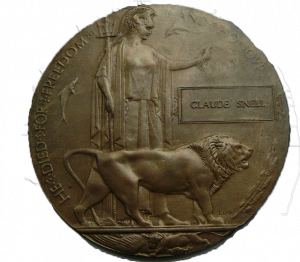
Claude was born in 1885 to George and Mary Snell at Bathpool, North Hill, Launceston. His father was in the Royal Navy at the time of his birth, serving on the HMS “Implacable”. By 1901 George being a Naval Pensioner was working as a Rural Postman and Claude had become an Apprentice Millwright. George died in 1908. By 1911 he had joined the Royal Engineers Corps as an Electrician, (Regimental No. 14693) enlisting at Devonport, Plymouth. He rose to the position of Lance Corporal. It was whilst being attached to ‘H’ company of the Bombay Defence Light section (having served there since May 1915) that he lost his life at Sea on the Troop Ship Leasone Castle en route for Marseilles, when it was torpedoed by UB 51 (Ernst Krafft) to the West of Alexandria and sunk on the 25th of May 1918 with the loss of 83 men. He is buried at the Chatby Memorial, Alexandria, Al Iskandariyah, Egypt. His Mother Mary had moved to 9, Higher Cleverfield, St. Stephens, Launceston, and it’s probably due to this move that Claude appears on both the North Hill and Launceston Memorials as is his Brother, George below, as well as the Roll of Honour in St Torney’s Church, North Hill.
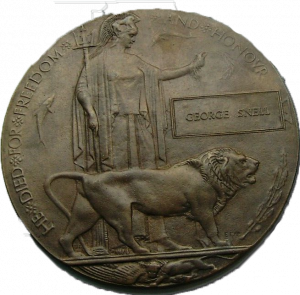
George was the brother of Claude (above) being born in 1891 at Bathpool, North Hill, Launceston to George and Mary Snell. By the He joined the Royal Navy in 1909 on a 12 year service period and in the 1911 census, he is shown as being an Able Bodied Seaman with at Devonport, Plymouth. He transferred to the RNAS in early 1917 and in April of that year, George was posted to RNAS Howden which was an airship station near York. The station covered the east coast ports to protect its shipping from U-boat attacks. On the first of April 1918, the RNAS was merged with the RAF just a month after George had been transferred to East Fortune a station near Edinburgh. This station had an airship base at Chathill, Northumberland and this was to be Georges final posting and he was now officially shown as a Corporal (314912) in the RAF working as an aircraft rigger. He died on the 18th of November 1918 after contracting influenza and double pneumonia at Wold House auxiliary Red Cross Hospital, near Diffield. He is buried at Nafferton All Saints New Churchyard, Driffield, Yorkshire. George is commemorated on both the North Hill and Launceston Memorials as well as the Roll of Honour in St Torney’s Church, North Hill.
Ernest THOMPSON
Ernest was born in 1892 at Trebartha, North Hill to Ernest and Margaret (nee Denton) Thompson. His father, a Yorkshireman, was the coachman for the Rodd Family of Trebartha. In 1911, Ernest himself was a footman to the Enys family at the famous Enys House in Penryn. War was declared on 4th August 1914 and by 3rd September Ernest was in a recruiting office in London signing up to join the 17th Lancers (Regimental No.G/6708). Ernest was a little under 5’ 7” and weighed just over nine stone; with his brown eyes, black hair and fresh complexion he would have cut a handsome figure when in uniform. He served in England until June 1915 when he transferred to the 3rd Battalion of the East Kent Regiment, The Buffs. A few days later he was serving in France as part of the British Expeditionary Force. He came home in October and whilst in England was transferred to the 6th Battalion The Buffs before returning to France in December. During March 1916 his battalion was in the vicinity of the much fought over Hohenzollern Redoubt in the Loos sector in France. The battalion made many raids on the enemy throughout the month. A major attack took place on the 6th of March in and around a strong point called Triangle Crater. Ernest was killed 12 days later, probably in the vicinity of the Hohenzollern Redoubt, and his body was never recovered.
He is remembered on the Loos Memorial at Dud Corner Cemetery, on North Hill’s War Memorial, and on this plaque in St Torney’s Church. This was probably commissioned by his parents – or possibly by the Rodd family for whom his father worked. His name is also recorded on his father’s grave in St Torney’s
Alfred (Fred) WALLIS
Alfred was born in 1879 at what is now known as Minions to Thomas and Elizabeth (nee Beswarrick) Wallis. His father was a tin miner, possibly working at the nearby Phoenix Consuls Mine. At some point in the 1880s, the family moved to Gunnislake where Thomas continued to work as a miner. In 1911 Alfred is found working as a quarryman at St Breward. On 26 August 1911, Alfred sailed from Bristol on board the SS Royal Edward on his way to Montreal and then onto Winnipeg. He settled at 419 Logan Avenue in Winnipeg.
On April 1st, 1916 he attested to join the Canadian Over-Seas Expeditionary Force. Details from his Attestation Paper read as follows:
Fred Wallis; 419 Logan Avenue, Winnipeg; born – Liskeard; next of kin – Thos Wallis, father, of Fore Street, Gunnislake, Cornwall; date of birth – October 27th, 1883; occupation – steamfitter’s helper; unmarried; apparent age – 33; height – 5 ‘ 4½”; complexion – dark; eyes – brown; hair – black; religion – Methodist
He was posted to the 44th Battalion of infantry which recruited in and was mobilized in Winnipeg. In France, the 44th Battalion was part of the Canadian 4th Division and were prominent in the famous battle to take Vimy Ridge. Alfred was killed on Vimy Ridge in the April of 1917.
The Commonwealth War Graves Commission records that 234598 Private Fred Wallis was the son of Thomas and Elizabeth Wallis, of Woodland Cottage, Gunnislake, Cornwall. Fred is buried in the 2nd Canadian Cemetery at Neuville-St. Vaast.
Alfred James WILLS
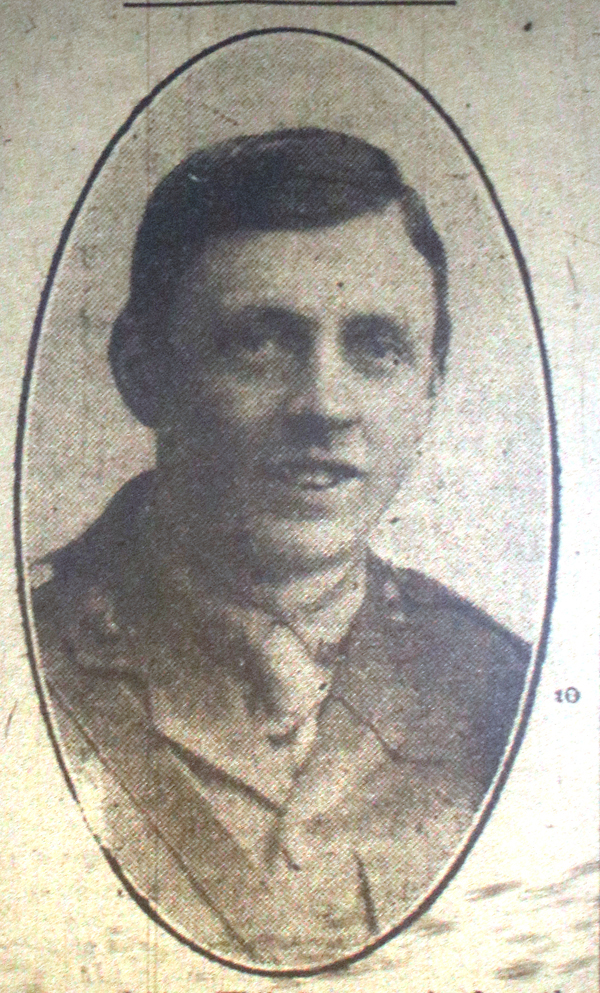
Alfred was born in 1895 at North Hill to James and Jessie Wills. His father was a bootmaker a trade that Alfred followed into. In the spring of 1918, Alfred married Ethel Annie Jones, also from North Hill. Ethel died on 25th June 1990 in Launceston and is buried in St Torney’s churchyard in North Hill. She had been married for 8 months and a widow for 71 years. Alfred was secretary of the Wesleyan Sunday School at Venterdon. Alfred enlisted with the Royal Garrison Artillery (regimental no. unknown) serving with the 182nd Siege Battery. He rose in the ranks to 2nd Lieutenant by 1918. The 22nd Heavy Artillery (HA) Brigade included the 182nd Siege Battery which had been present in France since September 1916. Alfred was gazetted as Second Lieutenant from 21st January 1917. This meant that he was in charge of a large howitzer and its crew. The 22nd HA Brigade was part of the British Third Army which attacked in thick mist at 5:20 a.m. on 17th October 1918. Behind a creeping barrage, the infantry and tanks moved forward on a ten-mile long front, south of Le Cateau. Despite tenacious enemy resistance and much uncut wire, the River Selle was crossed during the first day and by nightfall, Le Cateau had been captured. The fighting continued into the next day and it is likely that Alfred was killed at this time during enemy counter barrage fire when an enemy shell burst just behind Alfred’s position, killing him instantaneously. On the same day, two other 182nd men also died. All three bodies were exhumed in 1920 from a grave location at the entrance to a sugar factory near Inchy, nearly three miles from Le Cateau, and reinterred together at the nearby Highland Cemetery in Le Cateau, XI. C. 4. His name is commemorated on the Stoke Climsland War Memorial.
Major H. T. J. Cruickshank, R.G.A. wrote to his wife in a letter dated October 18th, 1918:
Dear Mrs Wills, It is with the greatest grief that I have to inform you that your husband was killed in action this morning. At the time, he was on duty with the guns, when an enemy shell burst just behind one of the guns, where he was standing and killed him outright. I have only recently taken over command of this battery, but from my short acquaintance with your late husband, I realised that by his devotion to duty and courage under hostile fire, he was an invaluable officer and a good example to his men. His loss will be much felt by his brother officers in the battery. His funeral will be carried out by the brigade chaplain in a garden near the battery position. Please accept my sincerest sympathy in your bereavement.
The above names were researched by the North Hill History Group and full information can be found at their excellent website; www.northhillhistory.co.uk/warmemorial.htm
North Hills Fallen from World War Two
Frances Joyce Chapman, known as Joyce, was born on February 1st, 1918. She was the daughter of Samuel George Chapman (born 1884) and Rosalie Hellen (nee Johns), born 1885, married 1908.
Her parents lived at Tregenna, Treneglos in 1911 and they had two children born there – a daughter Elizabeth Anne born in 1909 and a son born in 1910 who was named after his father but only survived three months and is buried at Treneglos. Elizabeth married in the summer of 1944 to Reginald T Pethick. Joyce had another elder sister, Edith, who was born in 1916 and a younger brother Jimmy (Harold James) who was born in 1928. The family moved to Newhay Hill Cottage in the 1930s and remained there for some years.
In the 1939 register, however, Joyce was living at The School House in North Hill with the family of Owen Mitchell, a stonemason. Joyce provided some sort of domestic assistance to Owen’s wife, Beatrice.
Joyce died in Southampton in 1944 aged 26. It is understood that Joyce died of pneumonia and had worked for the NAAFI organisation probably at a munitions factory in Southampton but no documentary evidence has been found. Joyce is not recorded on the Commonwealth Grave War Commission’s database which in addition to military casualties includes civilian deaths where the cause of death was directly attributed to the war or where the deceased contributed materially to the war effort. Joyce knew Doreen Sandercock well and both she and Doreen were amongst the many local young women who worked for the war effort far from home.
We are grateful to Peter Allen of the Altarnun Local History Society who has provided most of this biography of Joyce.
Leslie was born on 2nd December 1918 and attended North Hill Village School (now the Racehorse Inn). At the age of 15, he left Cornwall to work for Sainsbury’s in London, where he remained until he was called up at the beginning of WW2 in 1939. He enlisted with the Royal Navy, joining ‘HMS Gloucester’ which was on duty continuously from mid-1940 until her sinking by German Stuka dive bombers during the Battle of Crete on 22nd May 1941. By this time she was known as the Fighting G, having won five battle honours in under twelve months. Leslie was officially posted as lost at sea. His name is commemorated on the North Hill War Memorial and the Plymouth Naval War Memorial on the Hoe. Seven hundred and twenty-two of the 807 crew members were lost, representing over 30% of total naval personnel killed in the Battle for Crete.
William Arthur EVANS
Born on January 4th, 1910 in London, his mother being a Londoner but his father’s ancestral line was based in Devon and Cornwall. When William was still a babe in arms his father took the family to live in Cardiff, where descendants can be found today.
Brought up in Cardiff, William decided his future lay elsewhere and looked for it in Cornwall. He was given accommodation by a William Tucker in the St Pinnock area and in 1935 married the daughter of the house, Rosina Tucker. In 1939 the couple were living in North Hill in the house next to The Rodd Arms. William was working as a pig and poultryman, possibly on the Trebartha Estate. Whilst living in this area William and Rosina had two children: Phyllis was born in North Hill in 1940 and Rosemary in 1942. Around this time the family moved to work at Siblyback Farm in St Cleer parish.
In the early days of the war, despite being a farmer and not being required to enlist, William opted to volunteer for the army. And so he enlisted with the Royal Engineers as a driver (Regimental No. 1946988). This upset his wife whose worst fears were realized when he was killed on active service on October 27th, 1942 whilst serving in Iraq. Phyllis was too young to remember her father and Rosemary never met him as she was born whilst he was serving in the Middle East. The circumstances of William’s death were described in a letter, dated 7 November 1942, to Rosina from his commanding officer, Major H K Roseveare (whose family have Quethiock origins) of the Royal Engineers:
Dear Mrs Evans
You will, of course, by now have been notified by the War Office of your husband’s death as a result of a motor accident on October 27th. I cannot tell you how deeply we, the officers and men, feel for you and your two little children in this tragic loss.
He was driving by himself in a Studebaker lorry in convoy and seems to have misjudged a bend on the road built halfway up a mountainside. He went over into the river below. Death was due to multiple fractures of the skull – he cannot have known a second’s pain and the doctor who certified the cause of his death assures me that he cannot have known what happened. I went up to the spot immediately – it happened about 3 in the afternoon, and when we recovered his body we brought him back to this HQ and buried him the next morning. One of his mates, Sapper Arrowsmith made him his last resting place and is carving a beautifully done cross.
All this, I know, must reopen the wound, but I felt you would like to know what little I can tell you. He died for his country and to help our allies as surely as if it had been in battle – and we are all proud of him. He was buried, honoured by all his mates, at 10:30 in the morning and our thoughts were with you then – as they are now. I thought of Trebartha as I knew it last and of North End (sic – should be Hill) church and imagined him buried there in spirit.
If there is the slightest that I can do, you have only to ask. I am sending home to you anything of sentimental value and everything else will be sold here by auction and the results sent on to you.
The heartfelt sympathy of us all comes with this,
Yours sincerely
H K Roseveare, Major
William’s remains were initially interred in Andimeskh Cemetery which was in Persia, modern-day Iran. Along with other casualties, his body was later exhumed and transferred to the Basra Commonwealth War Graves Cemetery in Iraq in September 1944. William is remembered on the North Hill War Memorial and on the War Memorial in St Cleer.
Lesley Maunder was the third of Mr and Mrs Ernest Maunder’s six children. Lesley was born at Tremollett, and went to school in Coad’s Green and attended Sunday School at the Chapel in the village. Indeed, it was Leslie’s Sunday School teacher who encouraged him to join the Navy. At 14 years old, Lesley enlisted as a boy telegraphist, receiving his training at HMS Impregnable. He joined the crew of HMS Exeter in 1941. On March 1st, 1942 the Exeter was fatally damaged in the Battle of the Java Sea and sunk. He survived but was captured by the Japanese and taken prisoner. He was placed in the dreadful prisoner of war camp on the remote Ambon Island. Lesley died on April 13th, 1945, just four months before the Japanese surrendered. He was interred at the Ambon War Cemetery (grave no. 29B11).
Harry WAKEM
Harry Buckingham Wakem was born in 1901 at Stonaford, Trebartha, North Hill to William and Jane (nee Buckingham) Wakem. His father was a labourer on the Trebartha Estate. As a teenager through the years of World War One Harry worked as a market gardener but on his 18th birthday, he enlisted into the Royal Navy at Devonport for a 12 year period of service, all of which was spent as a stoker. Harry’s first sea-going posting was in May 1920 when he joined the C-Class light cruiser HMS Cambrian. After a short spell back onshore at HMS Vivid II, he was posted to the insect class gunboats HMS Cricket, Mantis and Bee from 1923 to 1926. In this period the gunboats were on the Royal Navy’s Yangtze River Patrol in China. Harry’s final posting was to on HMS Erebus, a gunner training vessel, before his ‘paper’ transfer to HMS Carysfort, which was the flagship of Devonport at the time and through which demobilization occurred. It is not know how his death occurred on the 13th of April 1940, or why he is commemorated as one of the WW2 fallen on the North Hill War Memorial, and he is buried at North Hill Parish Church with a normal headstone.
Click here for the Coads Green Auxiliary Unit Patrol.
Visits: 813

